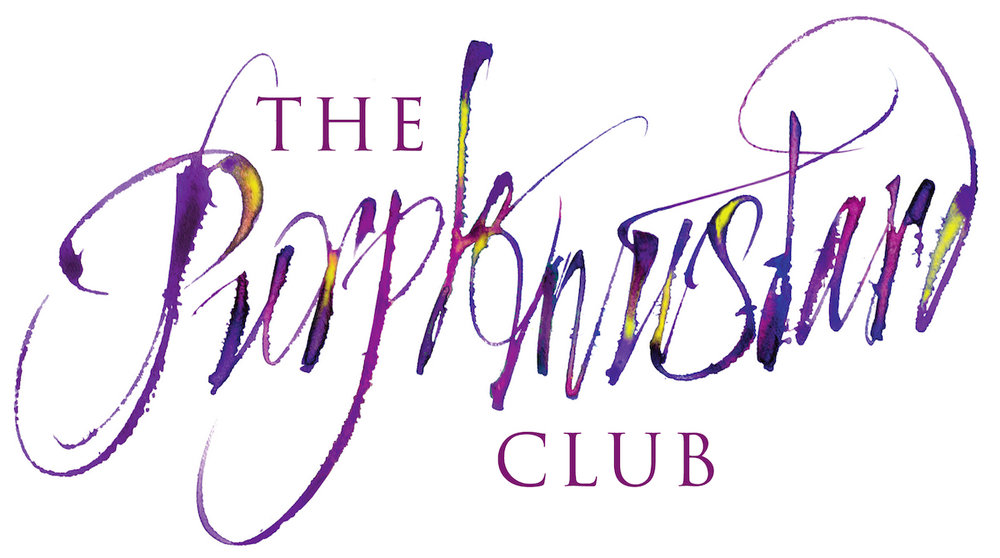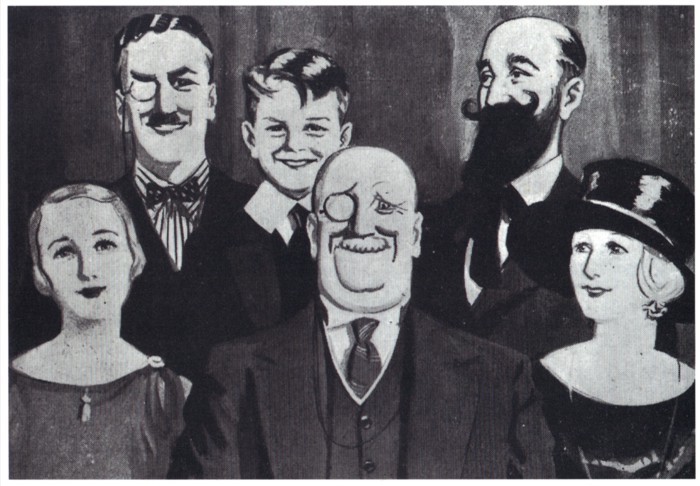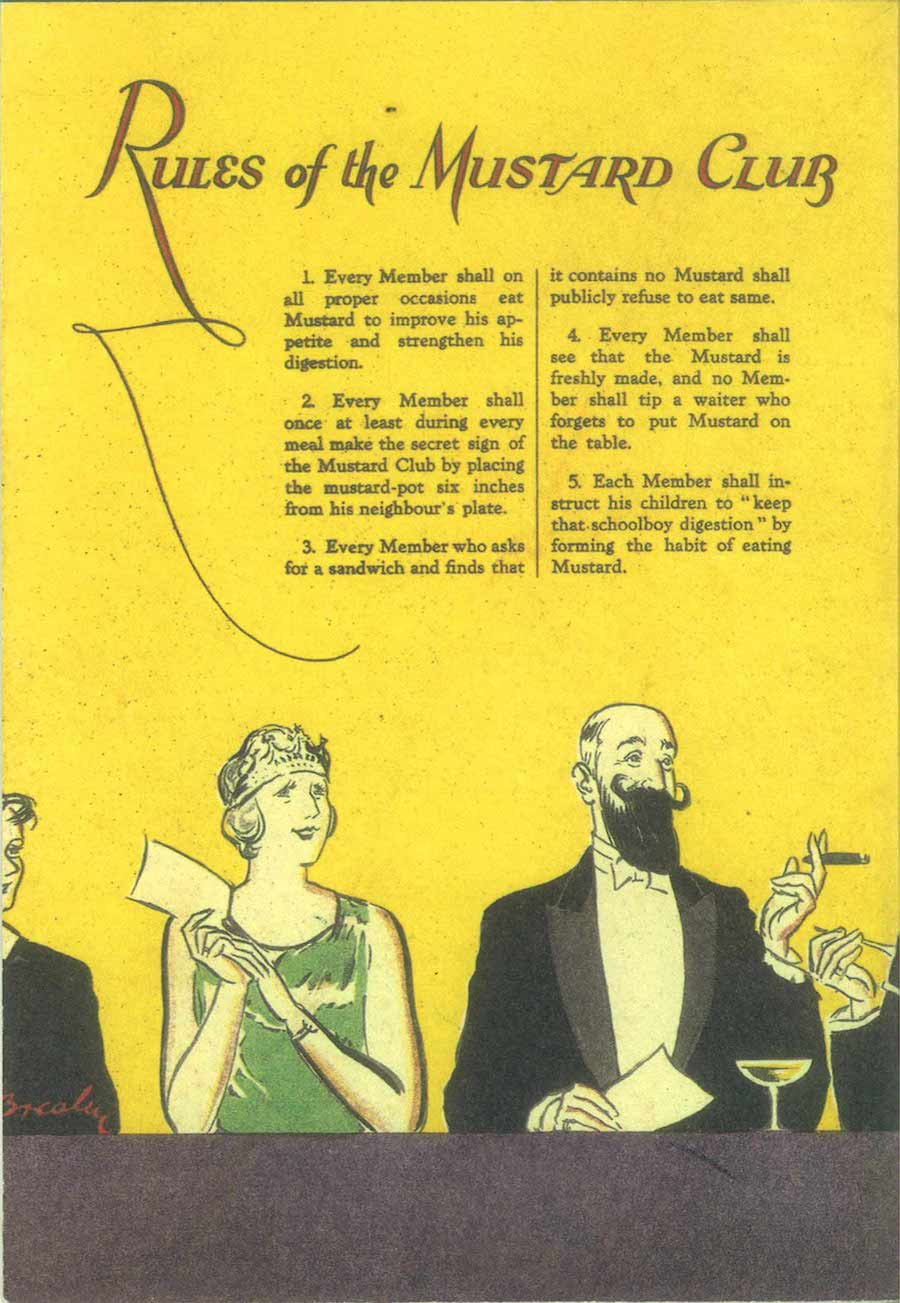Cutting the Dijon Mustard
image designed for The Purple Mustard Club by calligraphic artist Els Baekelandt
There is surely no better example of the power of marketing to influence public perception of a product, than the campaign launched by Colman’s Mustard in the UK in the 1920’s. Dorothy L Sayers was a well known author and playwright, creator of the amateur sleuth Lord Peter Wimsey, or to give him his full name and title, Lord Peter Death Bredon Wimsey. The various television series that the character spawned, still make enjoyable watching today. Whose idea it was to create the Mustard Club, who knows, but it was pure genius. Sayers was working for an advertising agency called Bensons, and they were commissioned by Colmans to produce a campaign to promote the product. A series of characters was created by Sayers, each associated with mustard or its application. The Baron de Boeuf was the President of the Club, Miss Di Gester, Lord Bacon, Augustus Gusto, and Master Mustard the characters. A short film of the trial of a man attempting to eat a ham sandwich without mustard brought harmless humour and parody. The evidence leading to conviction was given by the sandwich, and the culprit was duly sentenced to soak in a mustard bath. A small book of mustard recipes brought the characters to life with imaginative illustrations. Lord Bacon contributed recipes In Praise of the Pig, and a Baron de Boeuf speciality was Calves Head. Those fortunate to be working on the project must have had a field day.
Naturally there were Rules of the Club, which in the words of Michele Anna Jordan, author of the excellent ‘The Good Cook’s Book of Mustard’, “inspire a zaniness, a sort of goofy pursuit of mustard obsession, a phenomenon I have encountered previously only with garlic”
“THE RULES OF THE MUSTARD CLUB:
1. Every Member shall on all proper occasions eat Mustard to improve his appetite and strengthen his digestion;
2. Every Member shall once at least during every meal make the secret sign of the Mustard Club by placing the mustard-pot six inches from his neighbour’s plate;
3 Every Member who asks for a sandwich and finds that it has no mustard shall publicly refuse to eat the same;
4. Every Member shall see that the Mustard is freshly made, and no Member shall tip a waiter who forgets to put Mustard on the table;
5. Each Member shall instruct his children to keep that ‘schoolboy digestion’ by forming the habit of eating Mustard.”
The Mustard Club
The oil produced from the mustard plant had been recognised for its health and curative properties for millenia before the Romans started experimenting with the use of the seeds as a cooking aid. The first recipe for mustard in written form, still exists today. It was created by a Roman by the name of Columella in AD 42, and it was the Romans that introduced mustard to Burgundy. With the end of the Roman Empire, the mustard making was taken up with alacrity by the industrious monks, who took advantage of their location at the cross roads of Europe, to create demand for their product far and wide.
Dijon Mustard
Construction of the spire of Notre Dame de Dijon, which you see in the foto taken on my way to the market, started in about 1220. The jacquemart clock, just visible on the right hand side of the steeple, was brought back from Belgium by Duke of Burgundy Philip the Bold in 1382, and has been chiming the time for the residents of the capital of Burgundy ever since. It is one of the many historical gems of this once great city. By the Middle Ages, Dijon was the undisputed mustard capital of the world.
Norwich UK
From the 10c onwards, the Benedictine and Cistercian Orders spread their teachings and cultures from Burgundy around the rest of Europe, including to Norwich in the UK. At the time, Norwich was the #No1 market for wool in England, and in terms of financial importance, the #No2 city after London. Norwich Cathedral was inaugurated by its first Bishop, Herbert de Losinga, in 1096. The second Bishop of Norwich, Everard (see the story of The Purple Mustard), was buried at the Cistercian Abbey of Fontenay in Burgundy in about 1146. A two way trade had developed between Norwich and Burgundy, and the production of mustard found its way to Norwich. In due course, Norwich became home to one of mustard’s most famous Brands, Colmans.
Fallot of Beaune
Today there is only one artisan mustard maker left in Burgundy, Fallot of Beaune. All the other manufacturers have been swallowed whole and digested by multinational corporations, who make their pastes with seeds mainly from Canada. Fallot by contrast, still uses seeds from plants grown in Burgundy, which it grinds to a paste with traditional millstones.
Fallot does have a retail outlet in Dijon, which is appropriately situated on Rue de la Chouette, right next to Notre Dame, and here it is possible to taste and purchase the full range of their products, a selection of which will also be available next year in The Club’s online shop.
The use of the word ‘mustard’ to denote something positive, derives from the expression, not now so much now in common use ‘cuts the mustard’, indicating something that is successful, smart, a winning formulae. There are various theories as to where this emanated, but the most likely is from the use of knives to cut the mustard plant. If the knife was sharp, and up to the job, it ‘cut the mustard’. This may have started in the mustard fields around Norwich.
Mustards from Fallot and Purple Mustard Club Apron






